Sphingidae Macroglossinae
Hyles lineata
Pupae
Home Butterflies and Moths Details Range Map Adult Larvae
Pupa #1 Green Colored Form - Male - April 26, 2015
46 mm long
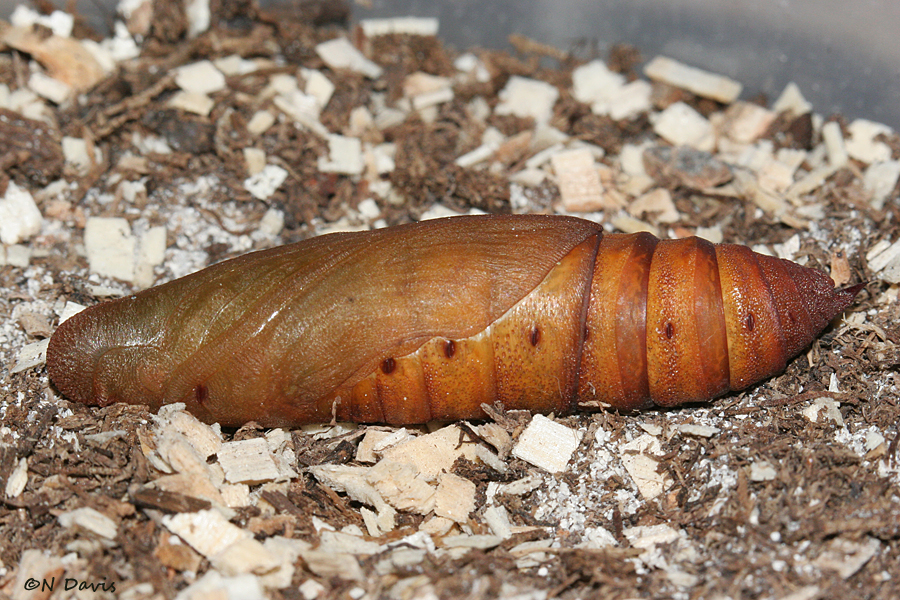
Pupa #1 Green Colored Form - Male - April 26, 2015
46 mm long
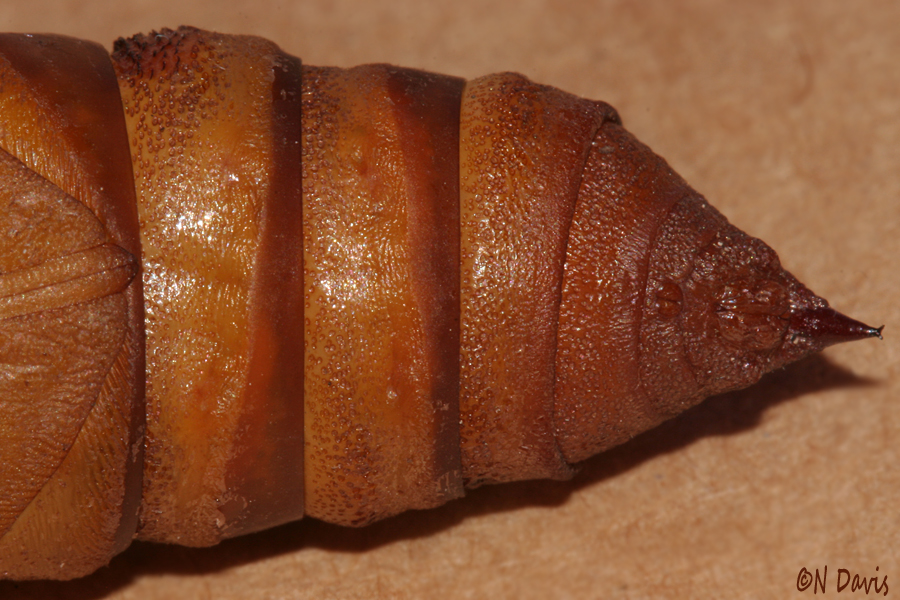
Newly Formed Pupa #2 Medium Colored Form
7 P.M. April 25, 2015 - 45 mm long
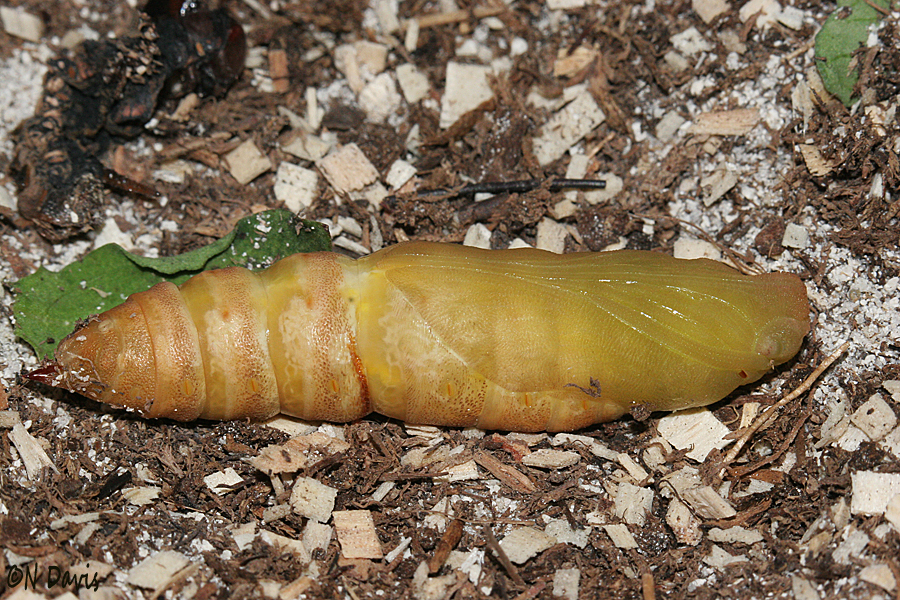
Pupa #2 Medium Colored-Form - 7 P.M. April 25, 2015
Male - 45 mm long
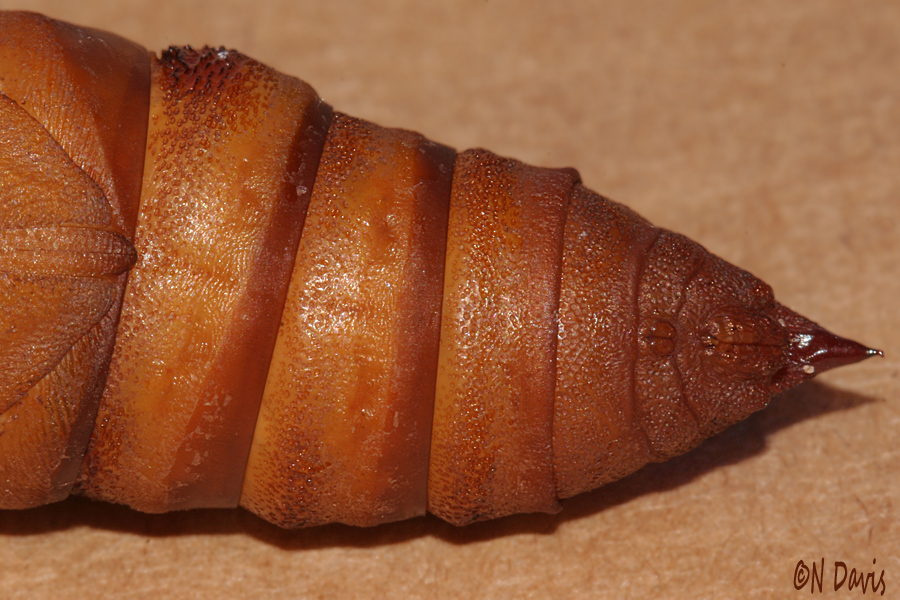
Pupa #3 Medium Colored Form - Pupa < 6 A.M.
52 mm long- Female
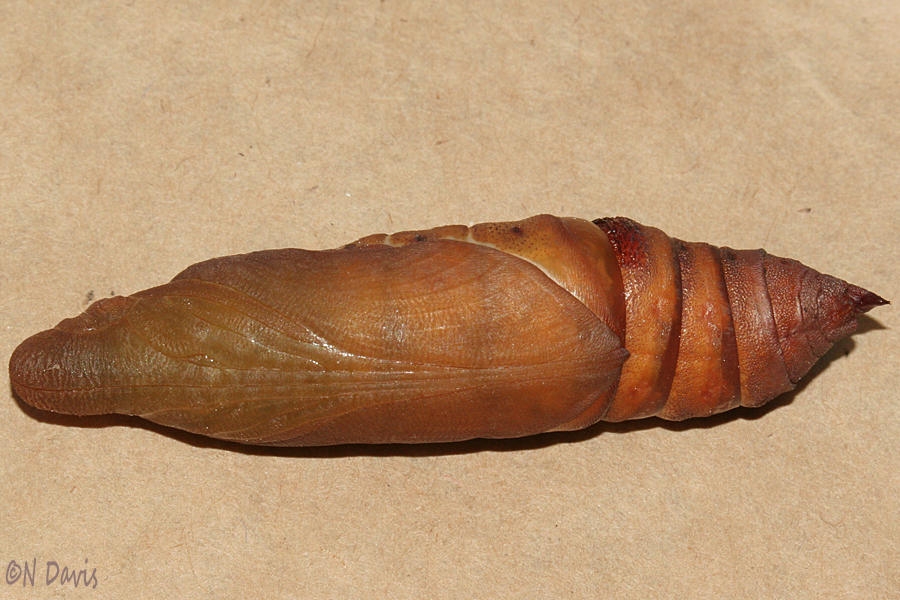
Pupa #3 Medium colored form - Pupa formed < 6 A.M.
52 mm long - Female
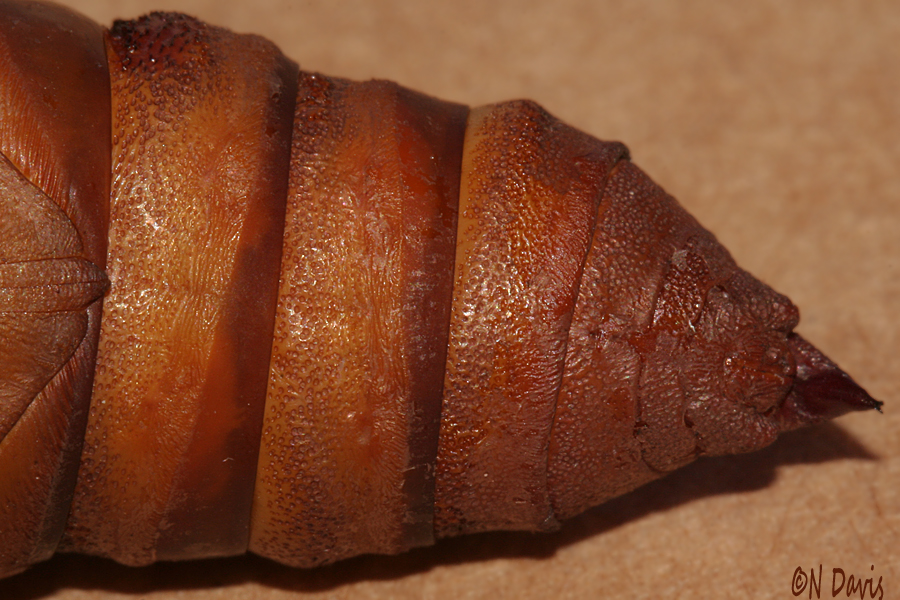
#4 Black colored form - Pupated 11:30 A.M. 27 April 2015
50 mm long - Female
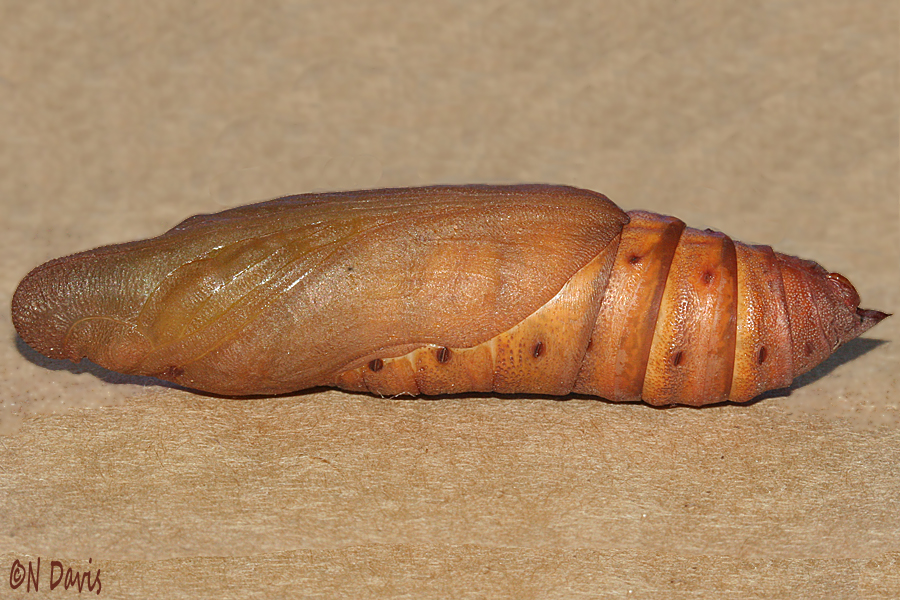
#4 Black colored form - Pupated 11:30 A.M. 27 April 2015
50 mm long - Female
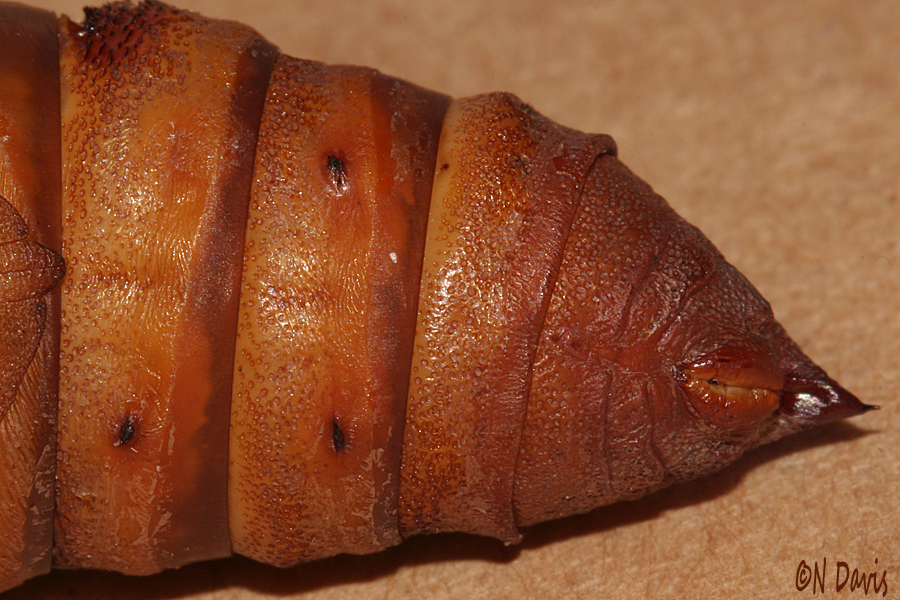
#5 Pupated May 1, Female 52mm long
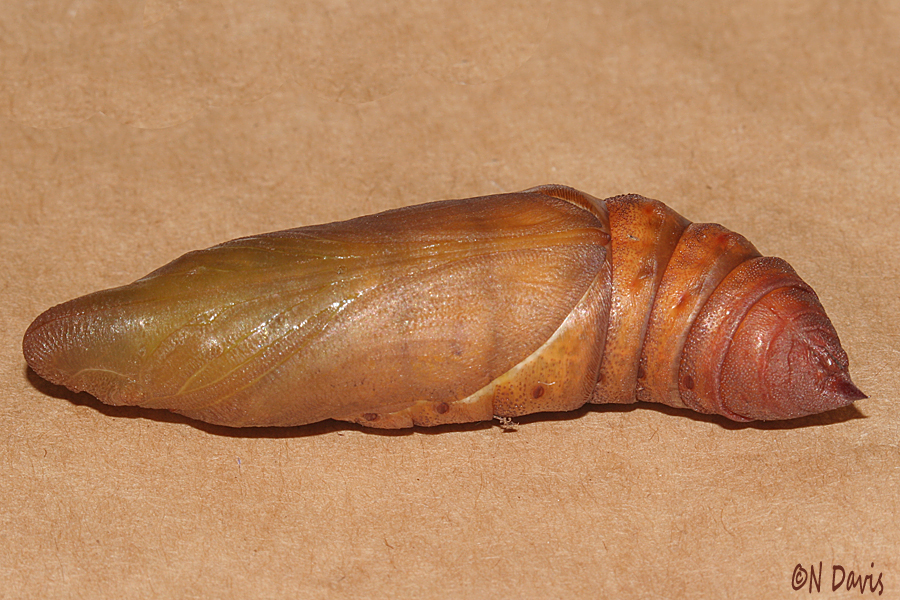
#5 Pupated May 1, Female 52mm long
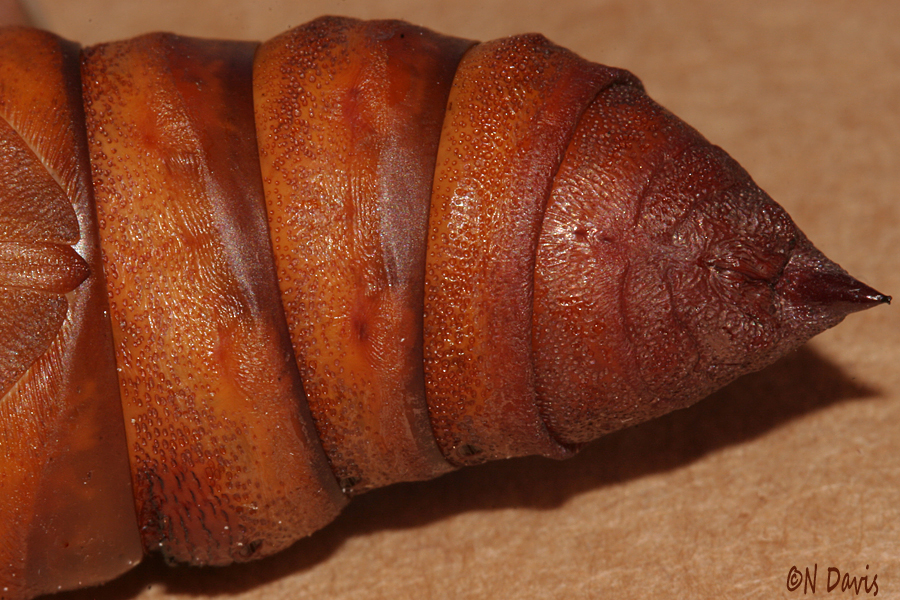
Pupa #2 A Darkening Eye spot - 7 May 2015
Indicates pupa is developing
and getting closer to emerging
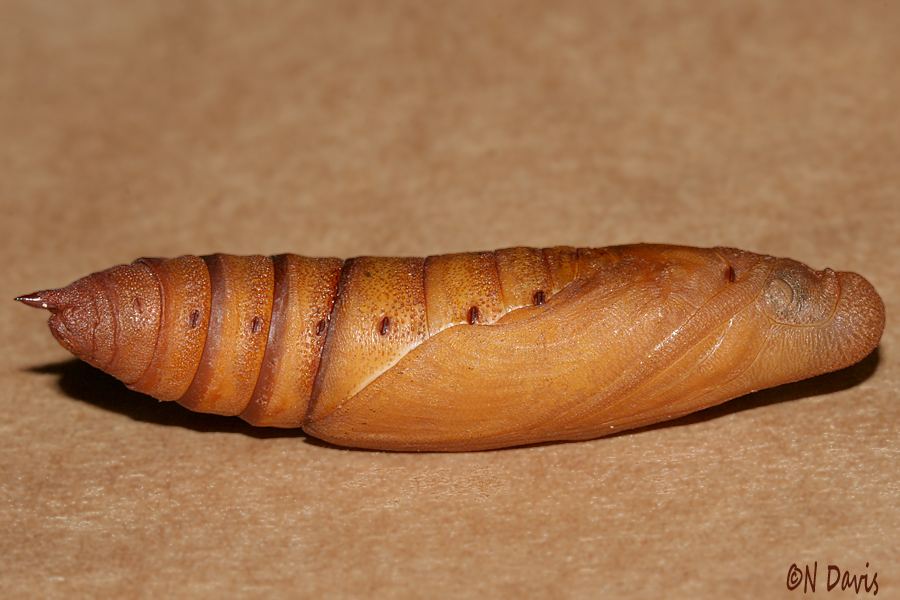
#1 Pupa - 15 May 2015 - Striped Pattern Visable On Wing Case
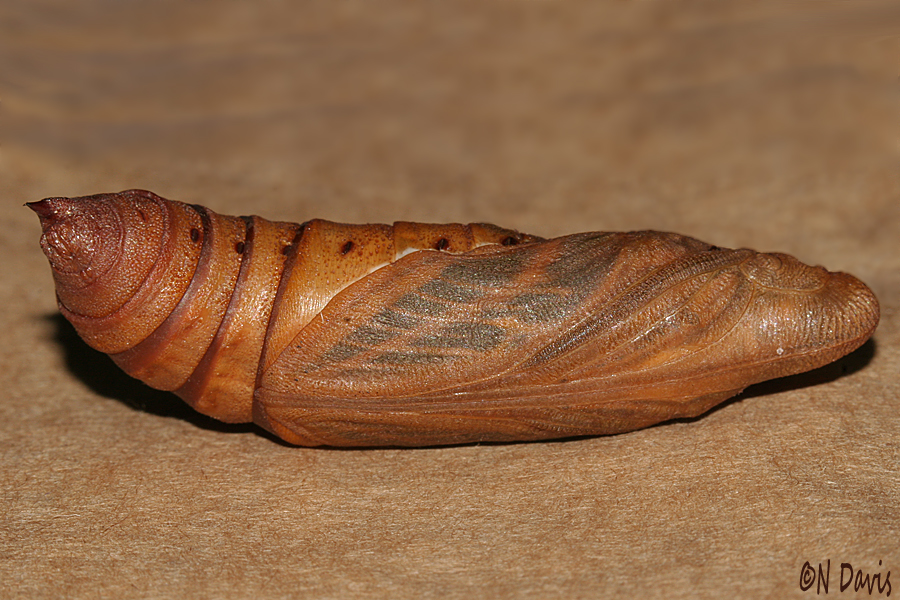
| Photo Details -
ŠNicky Davis John
Richards caught the female at a mercury
vapor sheet on 30 March 2015, Rockville,
Washington Co., Utah. He placed her in
a paper sack and she oviposited 1-3 April
2015 - 192 ova. John Gave me five
caterpillars to rear.
Photos This page has photos of the pupae with explanation of development and how to determine sex. On 20 April #2 medium form fifth instar caterpillar was 82 mm when walking. It purged excess liquid on 21 April and refused to eat and was then measured at 72 mm. The green form also purged liquid on the 21st of April and both were continuously walking around their containers. They were placed in containers with 2 1/2 inches of sand with a covering of lizard litter where they continued to walk around their containers and refused food. One did some digging into the sand, tossing it to the side, but still did not settle down. The next day I transferred them to containers with a mix of sand and peat moss with just a bit of the lizard litter. On the 22 of April after only five days as fifth instar another medium form caterpillar purged excess fluids and was placed in a container with sand, peat moss and a bit of lizard litter . The other larva also purged excess fluids, stopped feeding and were also placed in a container to pupate. It took about four or five days for them to transform to the pupa stage. On 7 May 2015 four of the five pupae showed darkening of the eyespot, indicating development of the adults. May 15, 2015, #2 Male Emerged. See photo at http://www.wildutah.us/html/butterflies_moths/moths/h_moth_sphinx_white-lined.html The adult moths emerged and one female mated and oviposited 18 ova in a brown paper lunch bag on 27 May 2015 at 8 P.M. and she was released the following day. Six ova hatched on 31 May 2015 and the rest collapsed. First Instar - 31 May 2015 Second Instar - Molted to 2nd instar 3 June 2015 Family Tree Family: Sphingidae, Genus: Hyles, Species: Lineata Other wingspan 2 7/16 - 3 9/16 inches (6.3-9cm) forewing top is dark olive to brown with paler brown along the costa and outer margin, a narrow tan band running from the wing tip to the base, and white streaks along the veins. Hindwing upperside is black with a reddish pink median band, Caterpillar Hosts: willow weed (Epilobium), four o'clock (Mirabilis), apple (Malus), evening primrose (Oenothera), elm (Ulmus), grape (Vitis), tomato (Lycopersicon), purslane (Portulaca), and Fuschia. Adult Food: Nectar from a variety of flowers. "Butterflies and Moths of America" These fed on Evening Primrose - Oenothera speciosa and Ornamental Pear leaves - Pyrus calleryana . Chinese Elm - Ulmus parvifolia leaves were offered and rejected as were Tomato - Lycopersicon leaves. John fed his on Evening Primrose - Oenothera speciosa and Apple - Malus Back to Top |